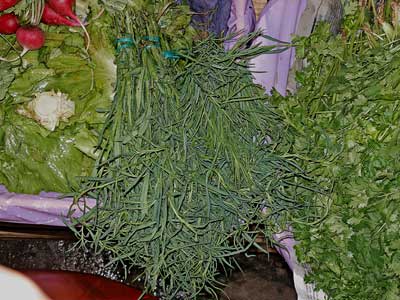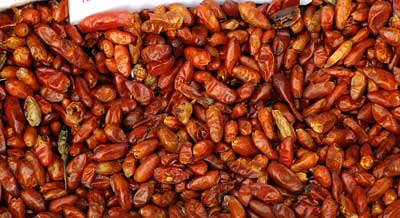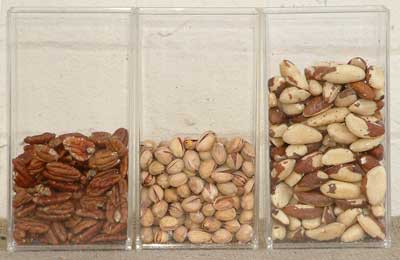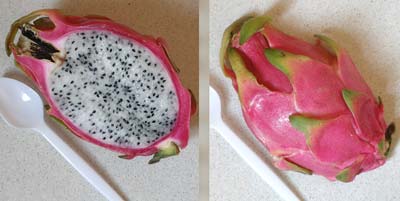
Chepiche. A herb with a slightly whispy similarity to tarragon in appearance, used traditionally in Oaxaca with black beans or in heavenly sopa de guias. It is usually added raw and may be served as a salad. It is a relation of papaloquelite.

A small variety of chilli which is one of the fieriest. They are green maturing to bright red or reddish-orange and are about 1-2 cm long (½-¾") and 75 cm (¼") and oval in shape. The pequin has a complex, smoky, citrus, nutty flavour. They are commonly used in salsas, soups, vinegars and pickles but are used mainly for liquid hot-pepper seasoning. Green fruits are usually pickled while the red ones are mainly dried. Heat = 8-9, registering 30,000 - 50,000 Scoville Units. There are many varieties, some round and some conical. Among them are Bravo, Mosquito, Pequeno, Turkey Pepper (Texas), Grove Pepper (in orange groves, Southern Florida), and Pring-kee-new [Rat-turd pepper] (Thailand), Birds Eye, Amash, Amomo, Chilillo, Chilipiquin, Chilpaya, Chilpequin, Chiltipiquin, Del monte, Huarahuao and Tuxtla. They are related to the wild form called Tepin/Chiltepin and grow throughout the mountains of Mexico.

Pistachio nut. The fruits of a small tree which originated in Central Asia, probably eastern Syria, but which is now widely cultivated. Just before harvest pistachios are enclosed in a green and magenta fleshy cover. These are the very best, if you can get them. However, fresh pistachios are rarely seen, mainly because they have a short shelf-life. They are usually hulled and dried, after which they are either roasted or roasted and salted. For cooking use the ones which are not already salted. They are sold in their creamy beige shells, which split as they ripen. The shells should be removed and the purple papery skins rubbed off revealing the bright green kernels within, the greener the better. They are related to both the cashew and the mango.

Dragon fruit or pitaya. A striking purplish red or yellow fruit from Central America, twice the size of a passion fruit. It is pithy inside with an an unnaturally white sweet jelly with black pinpricks of edible seeds. I think it looks and tastes unnatural. It is often made into a drink by whizzing it with water.